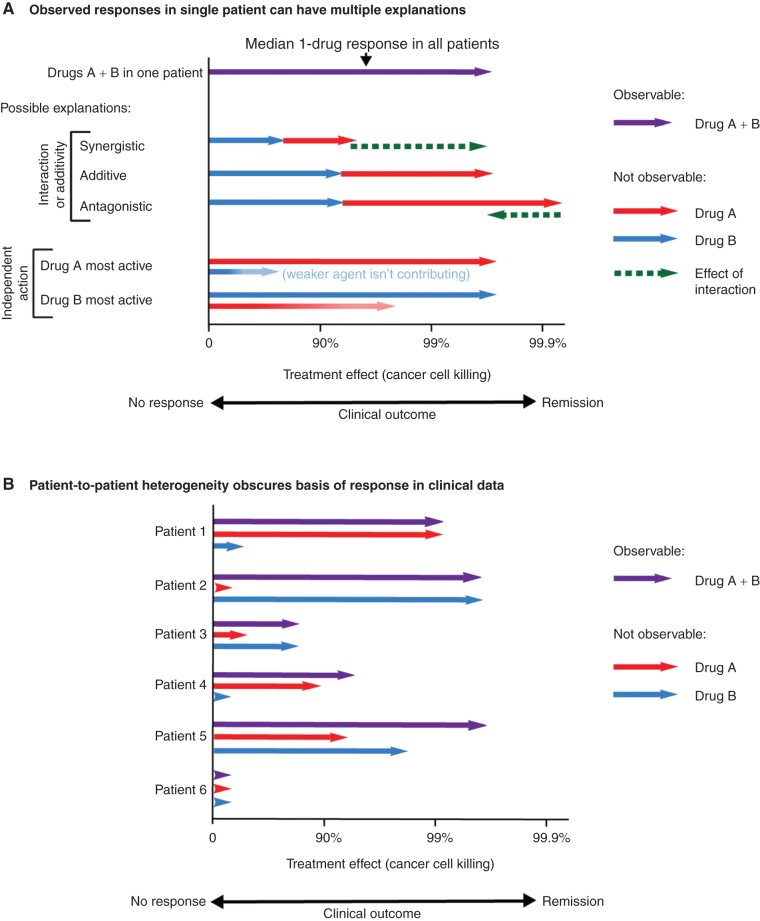Figure 2.
The basis for combinatorial efficacy is difficult to discern in clinical trial data because of patient heterogeneity in single-drug response. A, Clinical benefit from combination therapy can be mediated both by high single-agent efficacy (enabling many log-kills of tumor cells) and by combined effects that could be affected by positive or negative pharmacologic interactions (additive, synergistic, or antagonistic). The observation that a combination response in a single patient is superior to the population median single-drug response could therefore have multiple possible explanations. B, Patient responses to a single therapy are heterogeneous across a population. Variation in drug response among patients makes it challenging to understand the precise nature of drug interaction across a population. It is therefore necessary to formulate appropriate null models and then determine whether the data in aggregate exceed the predictions of the null model. Note that this scenario is purely illustrative because current technology does not make it possible to observe single-drug effects in individual patients who are treated with combination therapy.

